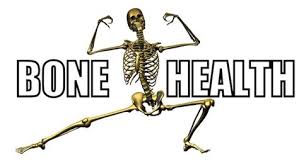Osteoporosis literally means “porous bone.” Bones that were once strong become weak, brittle and susceptible to fractures. It is a silent disease because there are no symptoms. Breaking a bone is often the first indication of osteoporosis. An estimated 54 million people suffer from low bone mineral density or osteoporosis.
Our bones are a living tissue and in a constant state of remodeling. With this remodeling, there is a level of bone breaking down and new bone being made. A person’s bone mass reaches its peak in his/her late 20’s. Osteoporosis occurs when the loss of bone is greater than the creation of new bone.

There are a number of factors that can increase the likelihood of developing osteoporosis. Some of these risk factors are out of your control including:
- Age, older > risk
- Sex, female > male
- Race, white or Asian descent > all others
- Family History
- Body Frame Size, smaller frame size > risk
- Medical Conditions including diabetes, autoimmune disorders, hyperthyroidism
- Medications including steroids, acid reflux meds
Risk factors that place you at risk and can be controlled include:
- Cigarette Smoking
- Excessive Alcohol Consumption
- Poor Diet low in calcium
- Sedentary Lifestyle
The first step in the prevention and treatment of osteoporosis is determining if there is significant bone loss. Your physician may recommend a non-invasive bone density test, DEXA scan. This test measures the strength and thickness of your bones. The National Osteoporosis Foundation recommends a DEXA scan for any woman 65 years old or older and any younger woman with a history of a fracture.
If you have been diagnosed with osteoporosis, lifestyle changes may be necessary to improve bone density and prevent fractures. Weight bearing exercises and performing correct body mechanics are just two factors that may need to be addressed. Your physical therapist would be a valuable resource to help educate you on appropriate exercises, body mechanics and ergonomics, and balance activities to improve bone density and prevent falls and fractures.
For further information please check out the National Osteoporosis Foundation website, www.nof.org.
